Observation vedts CIA. Lockheed A-12 Supersonic Strategic Scout
Lockheed was already working out possible solutions when Clarence L. (Kelly) Johnson, head of prospective development, who served as director of Lockheed's Advanced Development Projects office (also known as Skunk Works) was summoned to Washington in 1958.
A competition was announced for the best car to replace the U-2. At the same time, not a cent was allocated for the design of new machines - the companies developed the machines at their own expense, hoping that all costs would be compensated in the future. Among those presented were a Navy project and a Boeing project. Lockheed submitted several projects for consideration: G2A - subsonic tailless with low RCS, CL-400 - supersonic with hydrogen engines, A-1 and A-2 - supersonic aircraft with ramjet or turbojet-ramjet. The designation of the latter was deciphered as "Archangel-1 (2)". In September 1958, the FISH project proposed by the Convair division of General Dymanics Corporation received the greatest approval. The vehicle was an unmanned reconnaissance aircraft launched from the projected high-speed version of the Hustler bomber, the B-58B. However, after 2 months, Lockheed proposes a new high-speed reconnaissance project under the designation A-3. At the end of November, Convair and Lockheed are offered to create supersonic strategic reconnaissance aircraft using two powerful Pratt & Whitney J58 engines. The project was codenamed GUSTO.
Preference was given to the project Lockheed. In addition to lower cost and better tactical and technical characteristics, the fact that the previous U-2 was created on time and without exceeding the budget played a significant role here. In addition, the Skunk Works unit's staff assurance provided complete secrecy. In total, Skunk Works developed 12 prototypes before the aircraft layout was approved - it was the last prototype that received the designation A-12. 14 September 1958, the CIA entered into a contract with Lockheed to continue work on the A-12 aircraft. 01.09.1959 million dollars was allocated for expenses between 01.01.1960 and 4,5. The project was given the code designation OXCART (“The ox cart”). 26 January 1960 The CIA issued an order for X-NUMX aircraft A-12. The contract amount was almost 12 million.
An interesting fact is that the CIA began to select pilots before the first flight of the aircraft. All in all, the air forces selected 11 people. All pilots have been tested by the CIA and thorough medical selection.
The program had a very high level of secrecy comparable to the Manhattan Project. The development of the Lockheed A-12, in addition to people conducting research and development work, knew the American president, several people from the Air Force and several congressmen. It was strictly forbidden to link work with Lockheed, all drawings, units and assemblies were labeled "C&J Engineering". The necessary calculations, carried out on the NASA computer, to maintain secrecy were performed by Skunk Works employees at night.
Project A-12 was carried out according to a modified tailless design with a wing, which smoothly mated with the fuselage (later this scheme was called integral). When designing, designers faced various problems “getting out” from everywhere. "Tails" with a delta wing were available, but they had only one engine. Two engines of the Mirage IV were located in the fuselage, and in the new car they are separated. The designers feared that if one of the engines failed, the significant turning moment could not compensate for the rudders on the keels.
The problem was the high temperature of the structure at high speeds. Expansion of the metal during heating could cause unacceptable temperature stresses, deformation and fracture. High temperatures caused the use of special kerosene. Titanium alloys used for A-12 caused headaches. Titanium was not only heavily processed, but there was also an acute shortage of this material in the United States. For aircraft titanium was ordered in the USSR. Electrical contacts were gilded by electroplating, and in some places they were additionally lined with asbestos to increase their reliability at high temperatures.
According to the EPR contract A-12 it was necessary to minimize. In November, 1959, the electromagnetic testing of the model began at a specially designed Groom Lake site (Nevada). During the modifications Lockheed A-12 received a characteristic "kobrovidnuyu" form - bending contour and sagging on the sides of the fuselage. The influx of aerodynamics did not worsen, but even increased the stability of the aircraft and the lifting force, reduced the bending moment on the fuselage. Small keels mounted at the ends of the engine nacelles were tilted to the center of the aircraft 15 degrees from the vertical. The company has developed a radio-absorbing spike-shaped construction with plastic honeycomb filler. It was used to make side bursts, elevons, and wing socks. About 20% of the wing area is made using this design, which allowed it to withstand heating to 275 ° C. Ferrite-based black paint dissipated heat and reduced the radar visibility of the vehicle.
The fuselage, the wing (sweep on the leading edge - 60 °) and other elements of the aircraft had a complex shape, allowing to achieve high aerodynamic characteristics in various flight modes. Full turn keels at different flight conditions were rotated asynchronously or synchronously within ± 20 degrees. To save weight, the single cabin was not equipped with heat protection. All life support systems were connected to the pilot's spacesuit.
The first five A-12s, built in 1962, were powered by Pratt & Whitney J75 engines (76 kN thrust). However, the engines used for the first machines made it possible to develop a dive speed of M = 2. To increase the speed in October, specially designed J58 engines began to be installed on the aircraft, which made it possible to develop a speed of M = 1963 in 3,2.
Since the main purpose of Lockheed A-12 was to carry out reconnaissance flights over the territory of a potential enemy, special cameras were ordered to equip the vehicles. Hycon, Eastman Kodak and Perkin-Elmer were attracted to create them. All cameras developed by these companies (Type I, II and IV) were acquired for the OXCART program. In addition, they used the FFD-4 infrared stereo camera, developed by Texas Instruments Corporation in 1964 for U-2 by the TACKLE project. To protect the camera from heat created a special window of quartz glass. With a metal frame, the glass was fused using ultrasound.
In mid-January, the first prototype of the aircraft was assembled in the hangar of the Watertown Streep Air Force Test Base in the hangar of the Airtown Stree Air Force Test Base. Flight tests began in the spring. In the same period the equipment was installed. The prototype of the Lockheed A-1962, piloted by test pilot Lou Schalk, first flew into the air on April 12 of the year 25, during one of the runs, the car left the ground. The first "official" flight of the A-1962 took place on 12 on April 30 of the year. A-1962 broke the 12 sound barrier in May 2 during the second test flight.
All this time, Lockheed A-12 aircraft were equipped with J75 engines. October 5 1962, the car with the engines J75 and J58 rose in the air, and January 15 1963, the A-12, flew two J58. During the tests, a constant fuel leak was detected. Impaired tightness and overheating of the wiring insulation remained a problem during the entire period of operation of the A-12.
The plane had a large number of flaws. The main one is the enormous psychophysical stress on the pilot of a single-seater. 24 May 1963 near Wendover, UT the first A-12 crash occurred. During flights over American territory for various reasons 1963 A-1968 crashed in 4-12.
Speed M = 3 was reached 20 July 1963 of the year. In November of the same year, the estimated speed and altitude were achieved. 3 February 1964 of the year the scout at an altitude of 25290 meters picks up speed M = 3,2 and maintains it for 10 minutes. 27 January 1965 of the year A-12 for 1 hours 40 minutes flew at a speed of M = 3,1 overcoming the distance 4,8 thousand km.
As of October 1966, about 40 flights a month were carried out during the tests. Another impressive demonstration of the capabilities of the Lockheed A-12 was Bill Perk's six-hour flight on December 21, 1966. The car overcame 10198 miles (16412 km). 1967 began with tragedy - in a routine training flight on January 5, Walter Ray crashed on a fourth prototype. Immediately after take-off, the flow meter failed, which caused an increased fuel supply and engine ignition.
Despite the fact that the aircraft was originally designed for reconnaissance flights over the territory of the USSR and Cuba, A-12 for these tasks were never used. Despite the successes that the A-12 demonstrated during test flights, the car remained "raw" and extremely difficult in piloting and maintenance. Despite this, the customer requested November 5 of the year to provide 1964 aircraft for reconnaissance flights over Cuba by 4. Since civilian pilots were not trained, Kelly Johnson allowed testers to voluntarily take part in this operation. By November 10 A-12 had been prepared for the operation, but the CIA leadership had already refused to use the new intelligence officer. One of the reasons for the rejection of the A-12 was the unavailability of on-board electronic warfare equipment.
His baptism of fire Lockheed A-12 was to take place in Asia. 18 March 1965 held a meeting of Maccon, director of the CIA and McNamara, minister of defense. They discussed the issue of strengthening China’s air defense and the increased threat from it for US U-2 aircraft and reconnaissance UAVs. It was decided that the alternative to the UAV and U-2 are Lockheed A-12, which must be transferred to Asia. The program was given the name Black Shield (Black Shield, Black Shield). The Kadena airfield on the island of Okinawa was chosen as the home base. During the first phase of the program in Caden, it was intended to deploy three intelligence officers for a period of 60 days twice a year.
In 1965, interest in A-12 from high-ranking officials dropped sharply. Requests by the CIA leadership to allow flights over North Vietnam and China under the “Black Shield” program came across opposition from the State Department and McNamara.
The reluctance of the manual to use A-12 for its intended purpose was the reason for raising the question of their necessity. The decision to put the Lockheed A-12 already built up on conservation was made at the end of the 1966 year. Their place was to be occupied by spy satellites and the double reconnaissance SR-71 - a direct descendant of A-12. February 1968 was defined as the deadline for conservation. However, instead of conservation, the scouts began to prepare them for combat missions. Change the decision forced the appearance of the C-75 air defense system in North Vietnam. A use request for A-12 flights over DRV came from US President Johnson. The scouts were supposed to monitor the North Vietnamese air defense, tracking changes in the deployment of missile systems. The use of A-12 over Vietnam was authorized by the American President 16 May 1967 of the year. 22 - On May 27, three A-12 unmarked, fully painted black, were transferred to Okinawa.
29 in May, the commander of the expedition unit, Colonel Slater, reported on readiness for the first reconnaissance flight that took place two days later - 31 in May 1967 of the year. Flight duration - 3 h 39 min., Speed - M = 3,1, height - 80 thousand feet (24 383 km). The Scout has fixed 70 positions of the SAM. Between May 31 and August 15, seven sorties were flown. Radar radiation was recorded in four of them, but no missile launches were noted.
16 August - 31 December scouts made another fifteen flights over the DRV. In the September 17 flight, the aircraft launched one missile of the C-75 complex, and September 23 launched another launch. October X-NUMX A-30 manned by Dennis Sullivan fired six missiles that caused minor damage to the aircraft - this is considered to be the only instance of a scout defeat.
Between January 1 and 31 March 1968, planes flew over Vietnam four times, over North Korea - twice. The first flight over Korea was made by CIA pilot Frank Murray on January 26. The flight of pilot Jack Layton over the DPRK 8 in May 1968 was the last for Lockheed А-12. After this, the reconnaissance mission began to be preserved.
Back in July, a memorandum was prepared by the budget committee on 1966, which proposed two options for the fate of Lockheed А-12 and SR-71:
- maintain the status quo, A-12 - remained at the CIA, SR-71 - in the air force;
- cancel A-12, transferring all functions to SR-71 scouts.
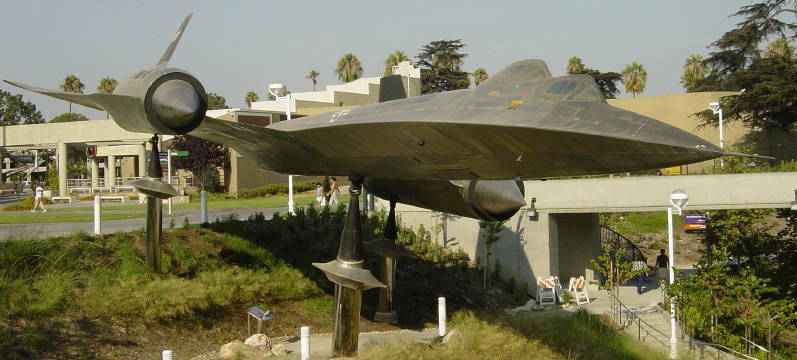
December 16 The last option was chosen for 1966: A-12 minimized from January 1 on 1968. The first semester of 1968, A-12, was attempted to be kept by the CIA - various options for creating a “rapid reaction squadron” were proposed. However, on May 16, the American president confirmed the earlier decision. In May-June 1968, the scouts left Kadena, on June X, the conservation work of the scouts began in Palmdale. Not all airplanes returned from Okinawa, 4 June, during a training flight, was flown by A-4, piloted by Jack Wick. Officially reported that SR-12 disappeared.
A-12 last rose in the 21 sky on June 1968 of the year.
According to the program А-12, 18 aircraft of the following modifications were built:
A-12 - supersonic single strategic reconnaissance for the CIA;
A-12 "Titanium Goose" - combat training two-seater;
YF-12A - fighter-interceptor, double;
SR-71A - supersonic strategic double reconnaissance aircraft for the Air Force;
SR-71B - combat training aircraft, double;
SR-71C - combat training aircraft, double;
M-21 - double carrier for unmanned aerial vehicle D-21.
Flight-technical characteristics of Lockheed A-12:
Length - 31,26 m;
Height - 5,64 m;
Wing area - 170 m²;
Wingspan - 16,97 m;
Empty weight - 30600 kg;
Normal take-off weight - 53000 kg;
Engine - 2 × Pratt & Whitney J58-P4;
Engine weight - 3200 kg;
Maximum thrust - 2x10630 kgf;
Traction on afterburner - 2x14460 kgf;
Fuel - 46180 l;
Maximum speed - 3300 km / h;
Cruising speed - 2125 km / h;
Rate of climb - 60 m / s;
Practical range - 4023 km;
Tactical range - 2000 km;
Practical ceiling - 28956 m;
Flight duration - 5 hours;
Wing load - 311 kg / m²;
Thrust-to-0,54;
Crew - 1 man.
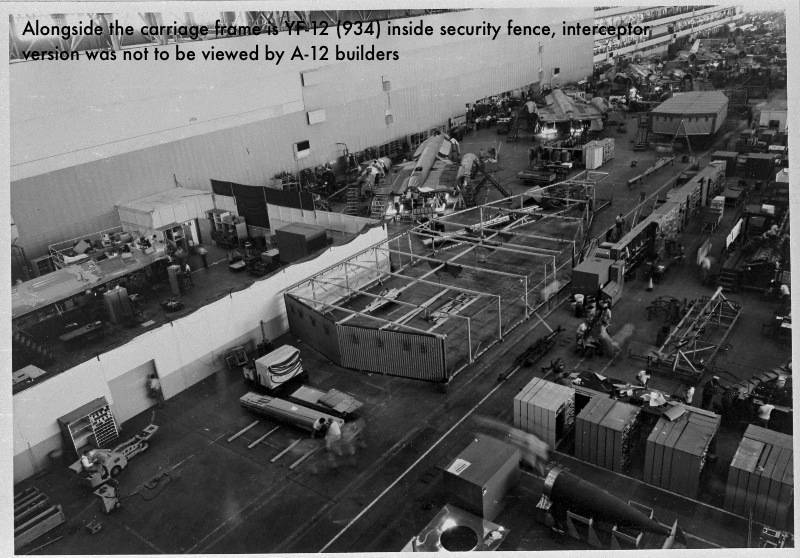
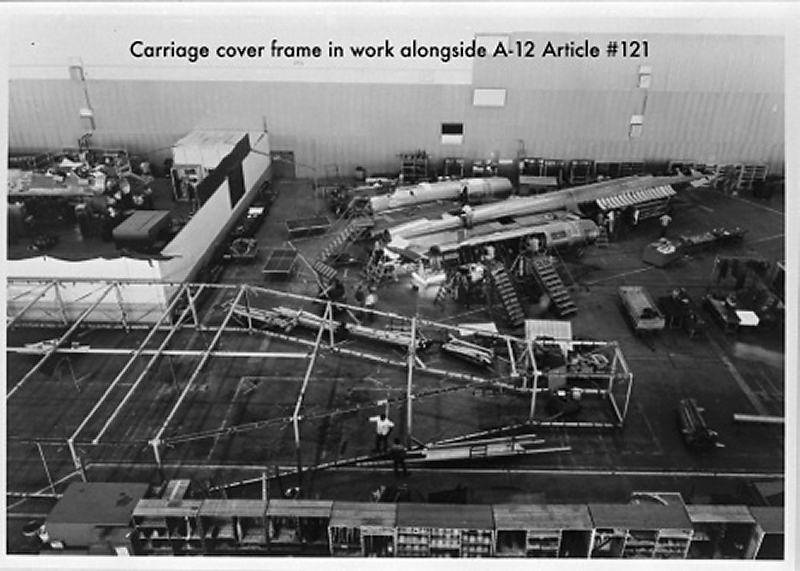
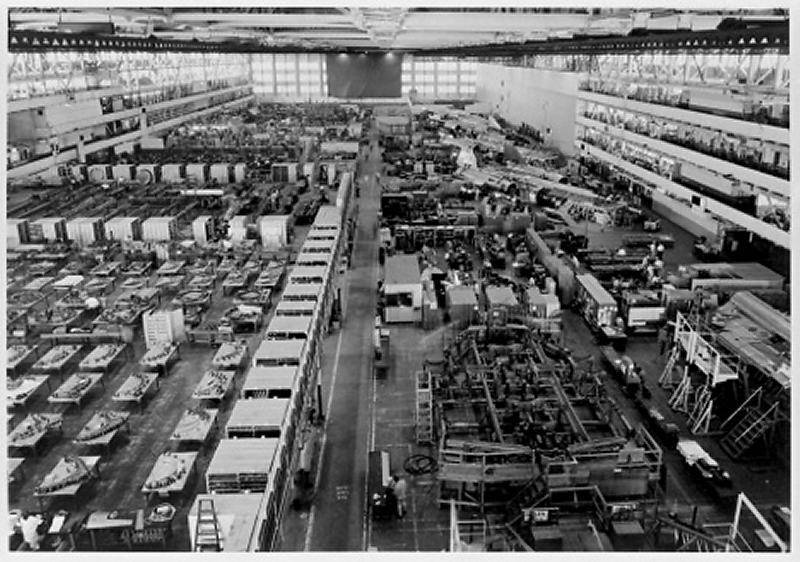
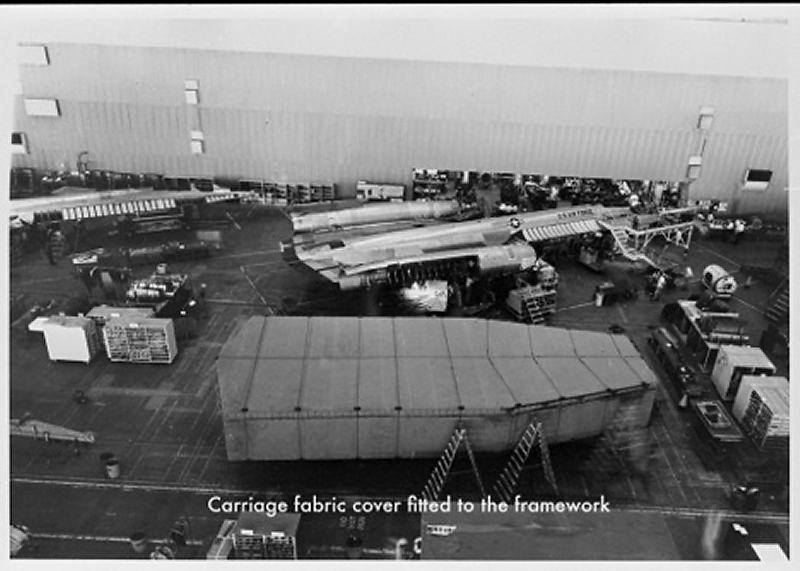
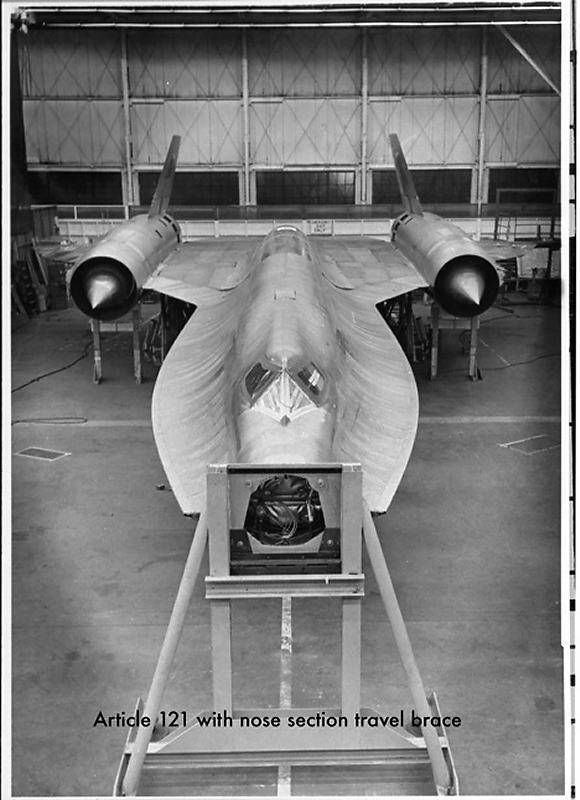
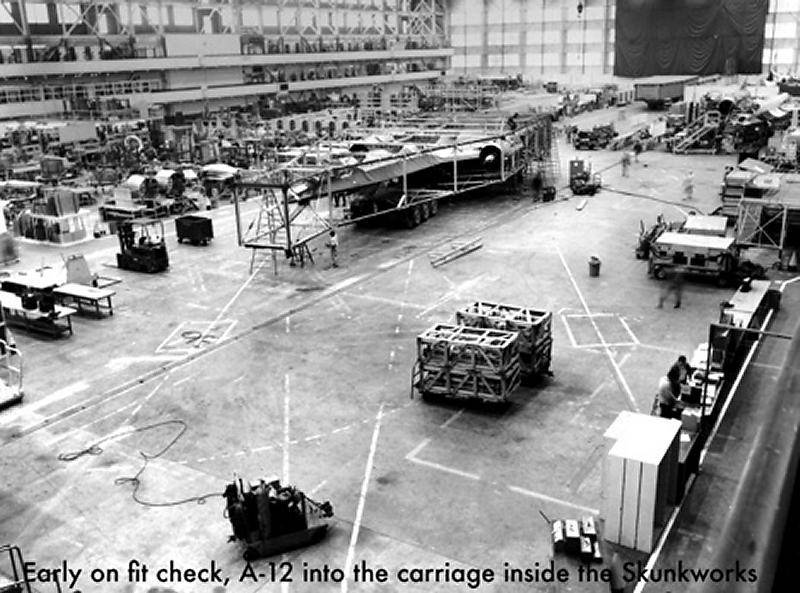
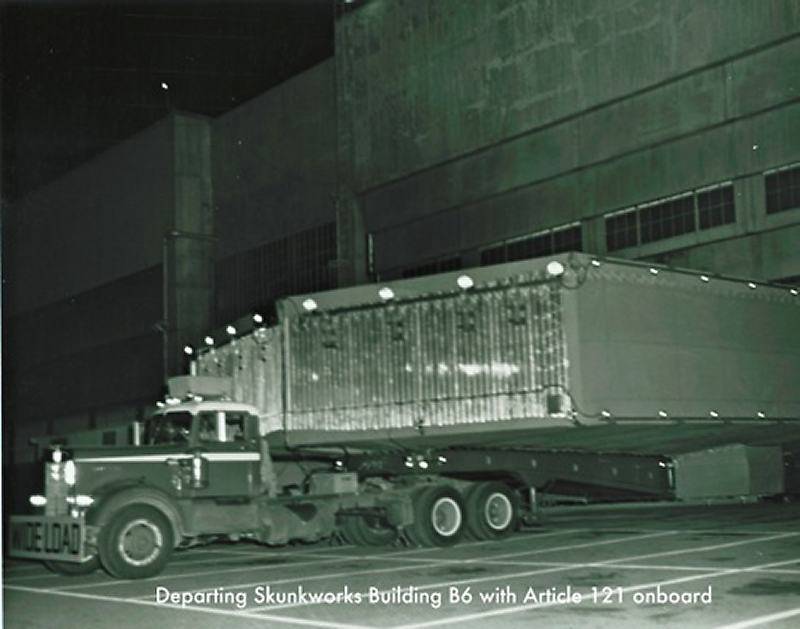


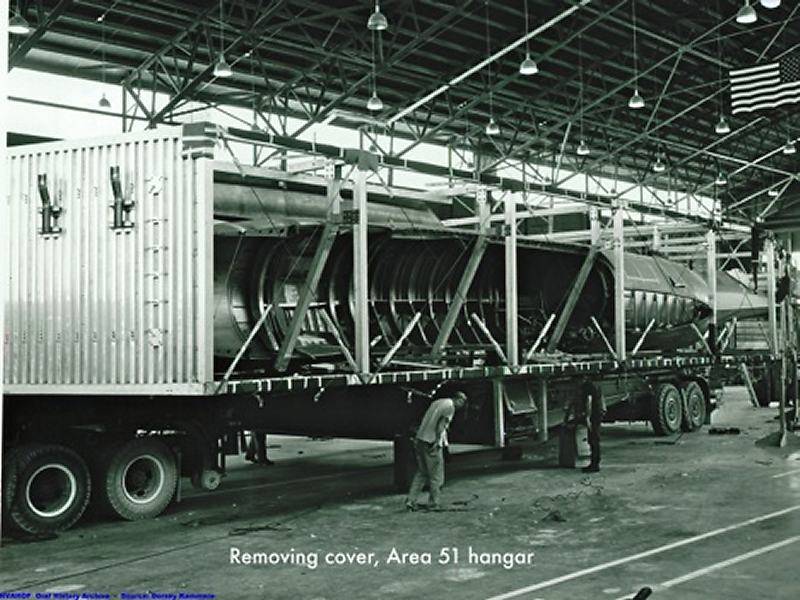
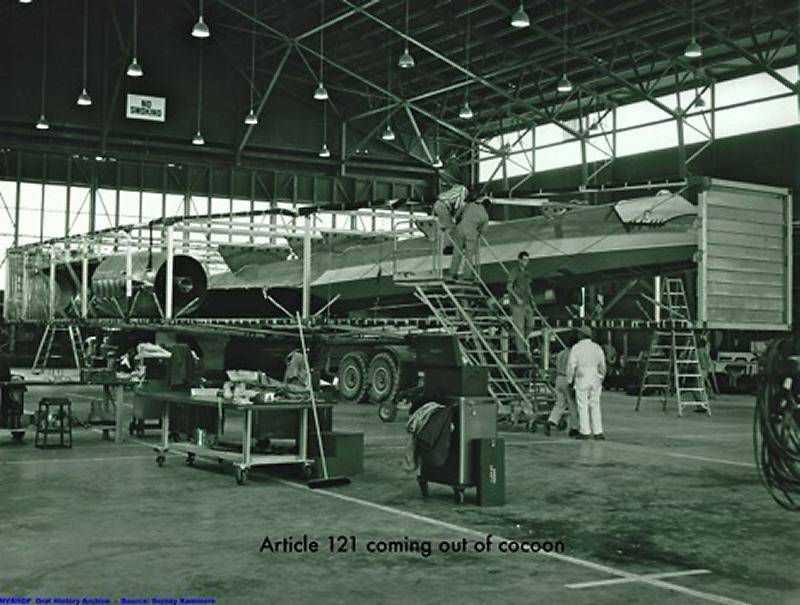
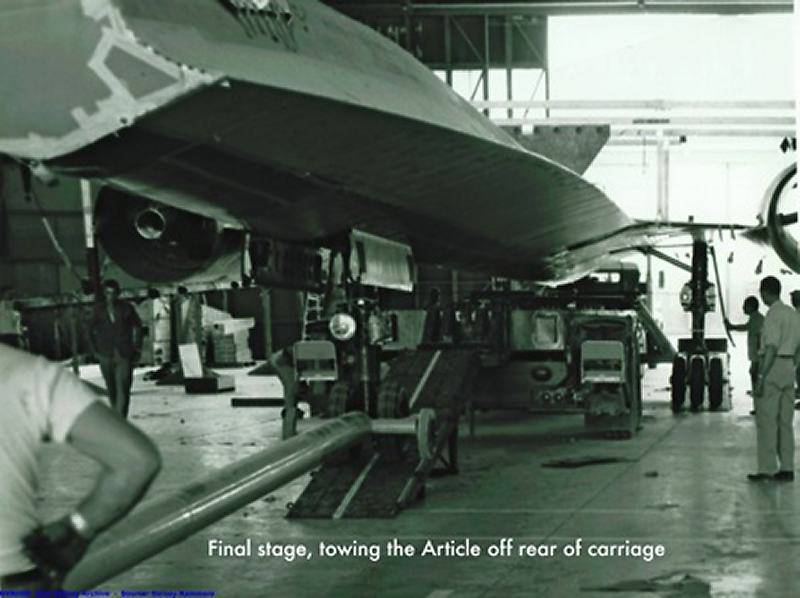
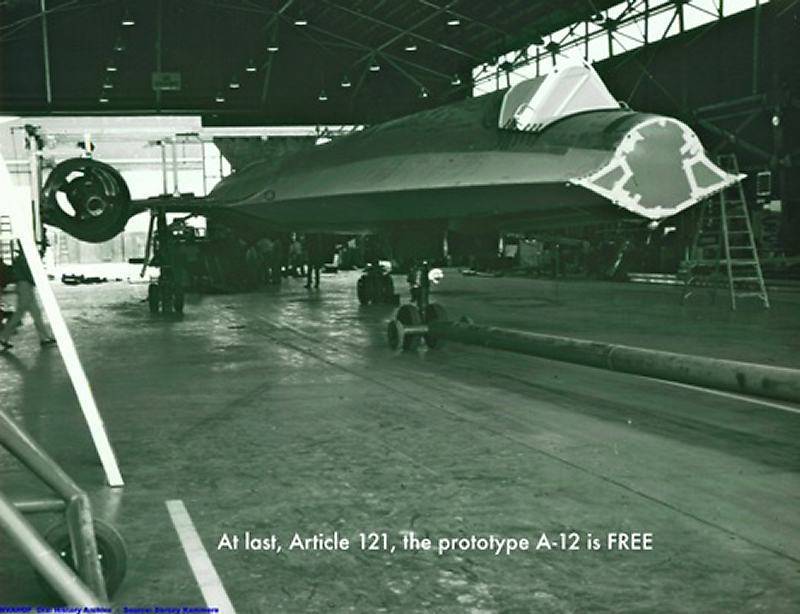
Based on materials:
http://vert-mi8.ru
http://www.airwar.ru
http://www.airbase.ru
http://www.testpilot.ru
http://mostinfo.su
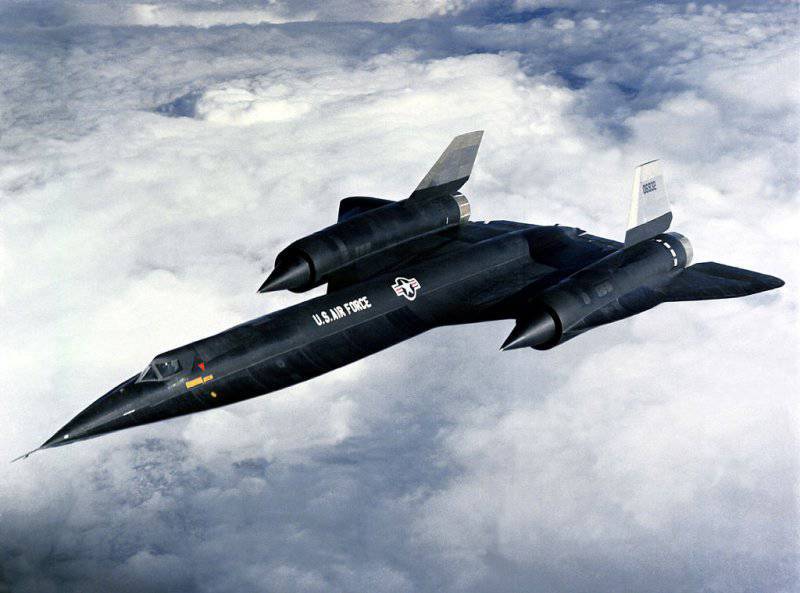
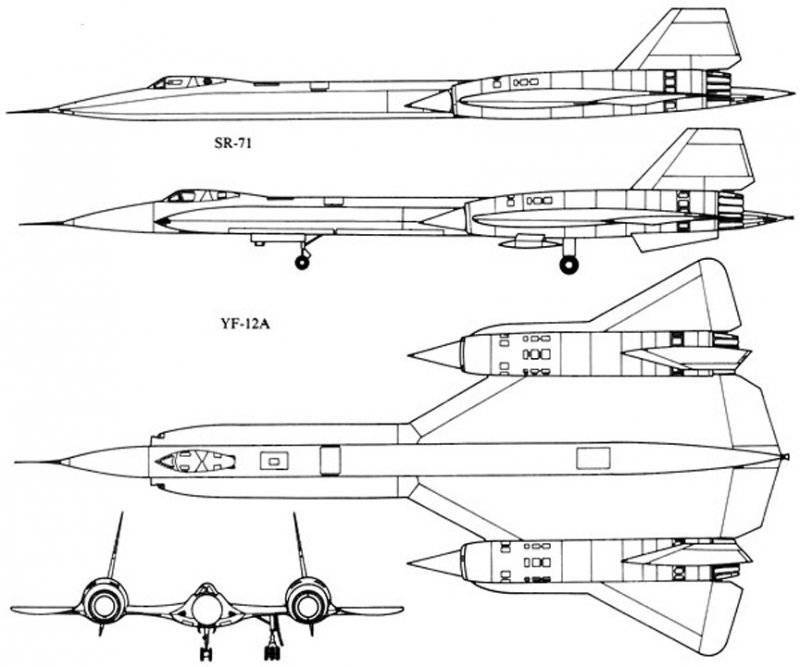
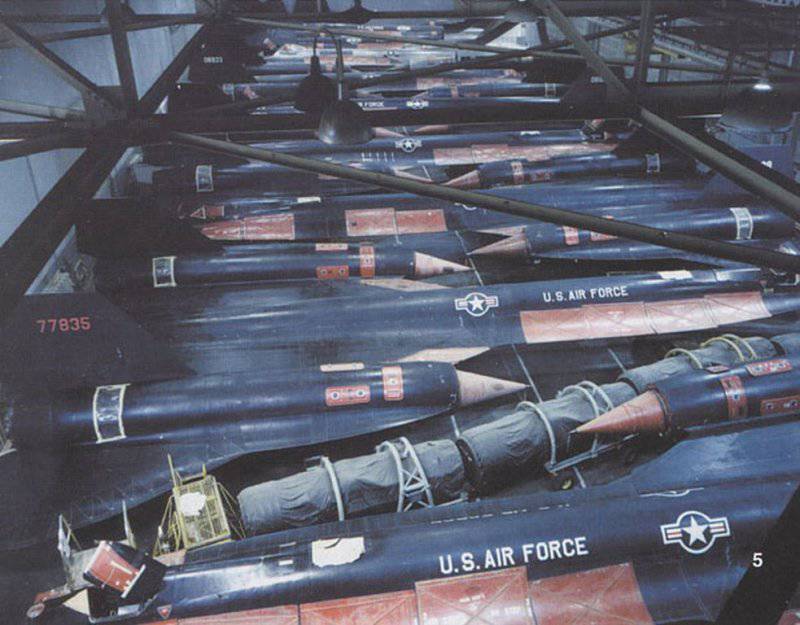
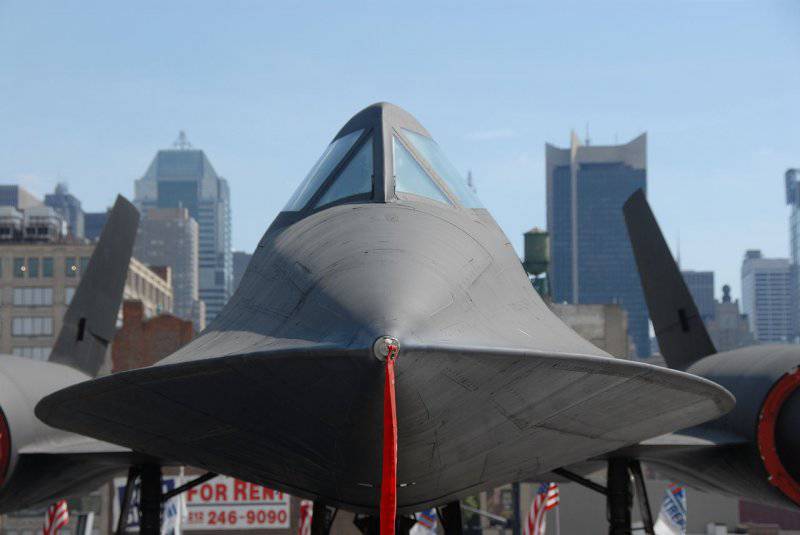
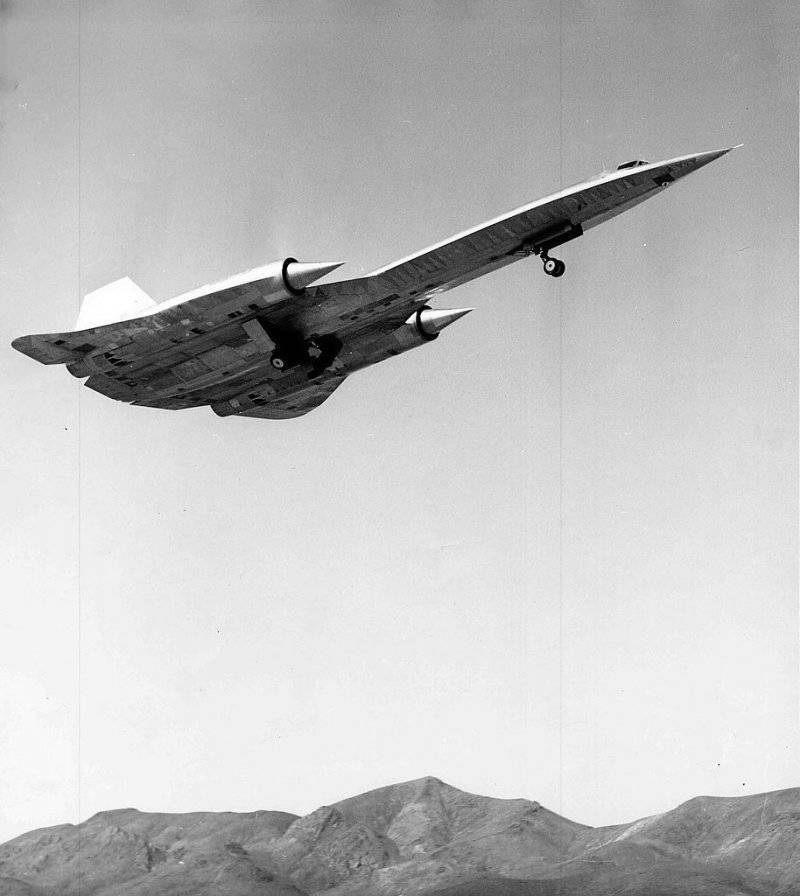
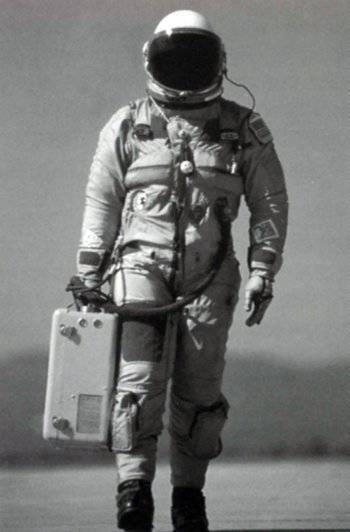
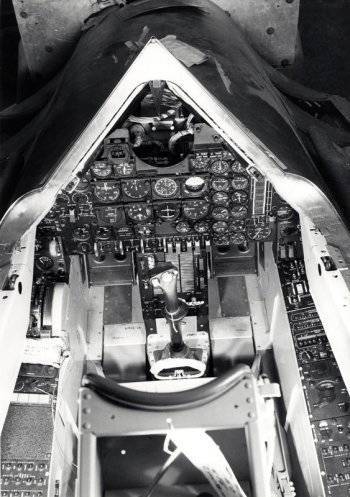
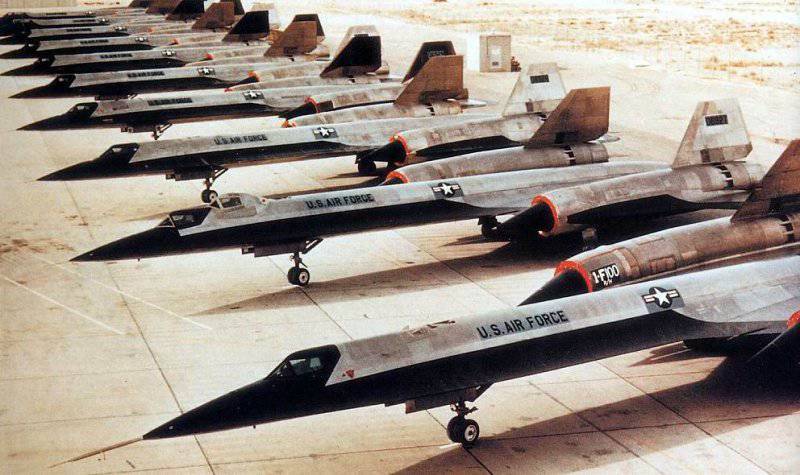
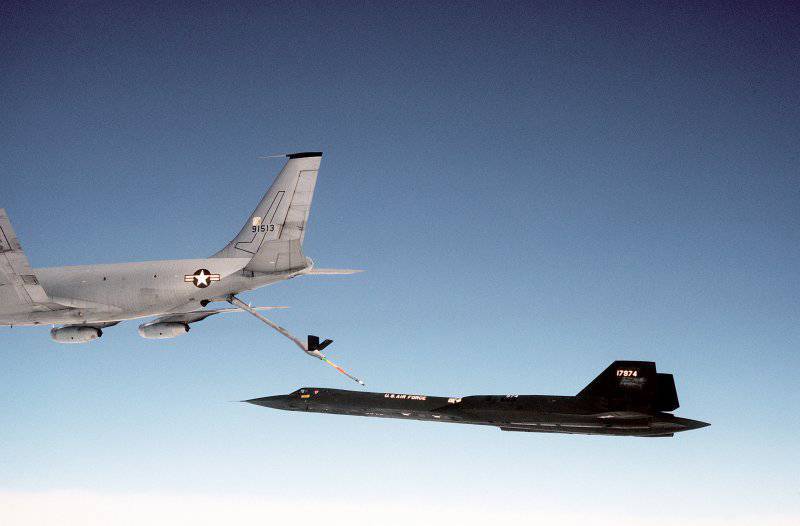
Information